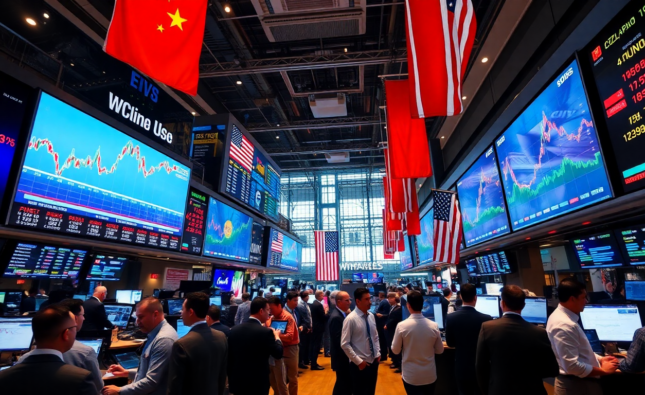
Modi and Vance Navigate India-US Trade Talks Amid Tariff Pause
The intricate ballet of international diplomacy is once again in the spotlight as Indian Prime Minister Narendra Modi and Senator J.D. Vance advance crucial trade negotiations. Both India and the United States are poised to redefine their economic relationship against the backdrop of a temporary pause in U.S. tariffs on Indian goods, strategically timed before a looming deadline that could see tariffs rise substantially.
Historical Trade Relations: The Current Landscape
The United States holds the distinguished position as India’s largest trading partner, with bilateral trade reaching a formidable $129 billion in 2024. This vital economic relationship generated a surplus of $45.7 billion in favor of India, underscoring the potency and asymmetry that characterizes current trade dynamics. Both nations have ambitiously set their sights on escalating this trade volume to an impressive $500 billion by the year 2030, marking a robust commitment to strengthening bilateral economic ties.
The Tariff Timeline: A Critical Juncture
Central to the negotiations is a 90-day pause announced by President Trump to delay the imposition of new U.S. tariffs on Indian imports, set to expire on July 9. Without an accord, Indian exports to the U.S. face the threat of a towering 26% tariff. These negotiations are further pressured by a newly implemented 10% baseline tariff, applicable to all U.S. imports as of April 5, 2025, although key sectors like pharmaceuticals and technology currently elude this levy.
Key Negotiation Points: Market Access and Concessions
The diplomatic dance involves two main thrusts: India seeks early market access for its goods, particularly textiles and leather, while the U.S. advocates for concessions on industrial and agricultural products. The proposed trade deal spans 19 chapters, addressing critical issues such as tariffs, non-tariff barriers, rules of origin, and customs regulations to facilitate smoother transactions and harmonious trade relations.

A New Era: Energy, Defense, and Technology Cooperation
Beyond commerce, these discussions are setting the stage for unprecedented cooperation in fields such as energy, defense, and technology. Notably, a 10-year defense framework is anticipated, promising to deepen military partnerships and enable vital technology transfer, thereby cementing a comprehensive India-US economic partnership.
Trade Talks: Schedules and Strategic Aims
The first in-person, three-day negotiation round between the U.S. and Indian chief negotiators is scheduled to commence on April 23, 2025, in Washington. The talks are structured to reach a tangible outcome, ideally an early tranche of a bilateral agreement by fall 2025, bridging both nations’ interests in reducing trade barriers and enhancing market access.
- Strategic negotiation goals include doubling trade by 2030.
- Emphasizing mutual concessions to curtail reciprocal tariffs.
- Focusing on sectors exempt from immediate tariff impositions like technology and pharmaceuticals.
- Securing deals that reflect shared defense and technology futures.
Conclusion: The Future of India-US Trade Relations
With an ambitious roadmap set ahead and high-stakes negotiations underway, the potential for redefining trade relations between India and the U.S. is significant. Both parties are investing in a future where tariffs are reduced, markets become accessible, and mutual economic growth is prioritized. As this saga unfolds, the implications for international trade dynamics and economic landscapes are profound.
For those closely tracking these developments, a deep dive into the structural nuances of bilateral trade agreements proves both enlightening and necessary. The coming months are crucial, as the world watches the convergence or divergence of these two economic giants.
L encourage readers to subscribe to our newsletter for updates on the India-US trade agreement roadmap 2025 and other international trade news.
FAQs
- What are the main goals of the India US trade talks? The primary objectives include doubling bilateral trade to $500 billion by 2030, reducing trade barriers, and securing mutual market access.
- Who are the key figures in the current India-US trade negotiations? Prime Minister Narendra Modi and Senator J.D. Vance are leading the ongoing discussions, focusing on trade agreement adjustments and future cooperation.
- What is the significance of the tariff pause? The 90-day pause on tariffs provides a crucial window for negotiations, aiming to avoid a significant increase in tariffs on Indian goods entering the U.S.
- What sectors are exempt from new U.S. tariffs? Currently, key sectors like pharmaceuticals, semiconductors, and technology are exempt from the new baseline tariffs.
- How does the trade agreement impact the India-US economic partnership? The agreement seeks to enhance the partnership by facilitating easier trade, encouraging investment in defense, and advancing technology collaboration.










Comments